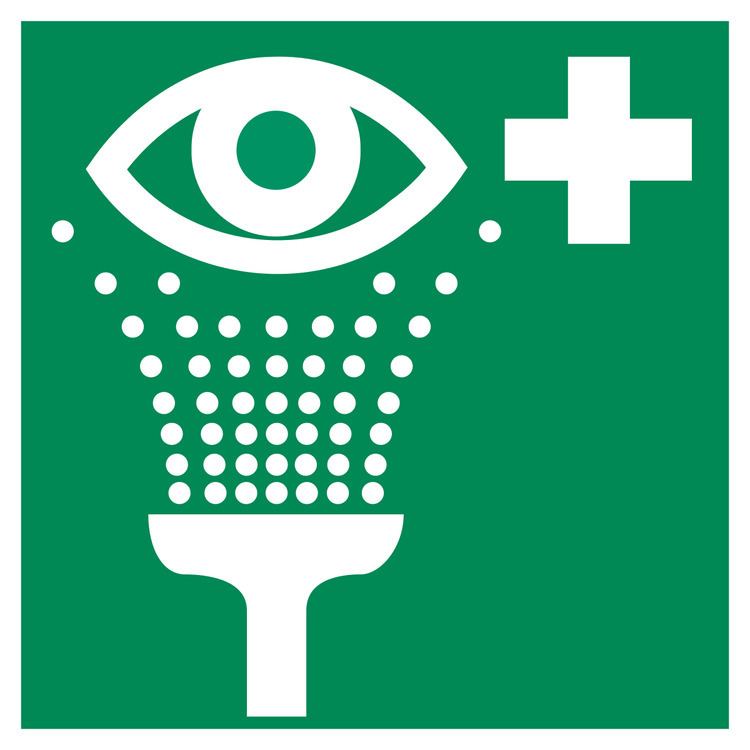 | ||
An emergency eyewash and safety shower station is essential equipment that every laboratory which uses chemicals and hazardous substances needs. Emergency eyewash and safety shower stations serve the purpose of reducing workplace injury and keeping workers away from various dangers.
Contents
Types
There are several types of emergency eyewash station and safety shower station systems, including safety showers, eyewash stations, drench hoses, combination units, and eyewash bottles.
Safety Shower
A safety shower is a unit designed to wash an individual's head and body which has come into contact with hazardous chemicals. Large volumes of water are used and a user may need to take off any clothing that has been contaminated with hazardous chemicals. Safety showers cannot be used for flushing the eyes, due to the high pressure of water from the shower, which can damage a user's eyes.
Eyewash Station
An eyewash station is a unit for washing chemicals or substances that might splash into an individual's eyes before he or she can seek further medical attention. The user needs to wash their eyes for at least 20 minutes.
Drench Hose
A drench hose is equipment that can spray water to a specific spot of the chemical exposure on individual's body. The benefit of a drench hose is that it can be applied to an individual who cannot reach a normal eyewash or shower station or where the eyewash and shower station is unavailable.
Combination Unit
A combination unit is where other units such as a shower station, eyewash station, and drench hose share the same water supply plumbing. This unit is useful in laboratory where hazardous chemicals with different properties are used.
Eyewash Bottle
Also known as a personal eyewash unit, it is a supplementary for eyewash stations. However, eyewash stations cannot be replaced by eyewash bottles since they do not meet safety standards. Eyewash bottles allow an individual to flush the injured area immediately, or until the individual can reach the fixed eyewash station. Early eyewashes were designed with a single rinsing stream, but recent advancements have made eyewashes capable of flushing both eyes simultaneously. A pH neutral solution for emergency eyewash may also be chosen to reduce the danger from contaminants if strong acid or alkali chemicals are present.
Specification and requirement
According to Occupational Safety and Health Administration (OSHA), several regulation of emergency eyewash and shower station was developed and contained in 29 CFR 1910.151 stated that "Where the eyes or body of any person may be exposed to injurious corrosive materials, suitable facilities for quick drenching or flushing of the eyes and body shall be provided within the work area for immediate emergency use." However, OSHA regulation is unclear on defining what facility is required. From this reason, American National Standards Institute (ANSI) has developed a standard for emergency eyewash and shower station including the design.
Safety Shower
Eyewash Station
Location
According to ANSI, the location of safety shower and eyewash station should be within 10 second walking distance from the place of hazard and must located on the same floor of the hazard so the victim does not have to go up or down the stair when accident occur. Moreover, the path way should be clear from any obstacle and as straight as possible.
